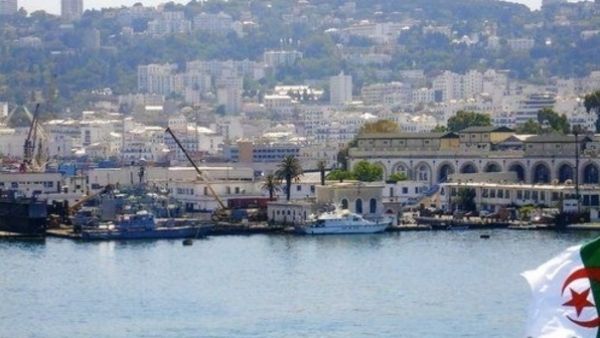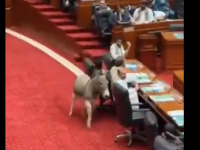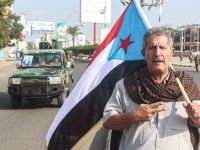White-washed Algiers, with sweeping views over a glittering Mediterranean bay, has long neglected its greatest natural asset but a major project is restoring the city’s seaside splendor.
The urban development plan, requested by President Abdelaziz Bouteflika, aims to transform several kilometers of coastline that years of industrial development have prevented residents from appreciating.
“The transformation of the bay, which is at the heart of the new image of Algiers, will help to resolve the paradox of seeing the sea but not accessing it directly or benefiting from it,” said architect Akli Amrouche.
Modern imperatives have wrought changes in recent decades – from railways and roads to a major port – that pushed the bay’s charm progressively farther out of reach for residents and visitors alike.
Only the tops of cranes can be seen above the ugly concrete walls surrounding the port, built to protect it from attacks by Islamist insurgents, who killed several foreign sailors during the civil war.
The conflict, which erupted in the early 1990s, pitted jihadists against the army during a decade of appalling blood-letting that killed up to 200,000 Algerians.
If blight of the port were not enough, pollution from wastewater, emptied into the bay from the Oued al-Harrach River, prompted a ban on swimming at most of the beaches once popular with bathers and sun-seekers.
Capital residents dream of Algiers becoming a Mediterranean city to rival Marseilles, Barcelona or Naples.
Instead, it has been pushing in the opposite direction, eating into the rich farmland of the Mitidja region, with the sea no longer visible from the sprawling suburbs.
The redevelopment plan seeks to readjust this focus, building walkways along the seafront, completely reorganizing the city center and restoring the old fishing port.
Several neighborhoods will be linked to the sea by projects harnessing green technology and modern design, Amrouche says.
“The purpose is to give recreational areas back to the people of Algiers and reopen their access to the sea.”
The redevelopment of the bay will give special importance to green initiatives, with a project to clean up the Oued al-Errach among the first, amid concern over its hazardous output.
Expected to cost nearly 400 million euros ($540 million), the project aims to get rid of the 67-kilometer watercourse that flows through the city, carrying industrial waste into the bay.
A facility at the mouth of the river is planned for water sports, with other recreational activities along the corniche.
“An open-air theater, six children’s playgrounds, grass lawns and gardens planted with trees of different sizes, bridges and footpaths are all planned,” Ahcene Ait Amara said at the Water Ministry.
Oued al-Harrach should then become the bay’s new center of gravity, with numerous projects dotted around it.
Among them will be the Grand Mosque, a vast compound with a prayer hall to hold 126,000 people, a minaret rising nearly 300 meters, an esplanade, cultural center, library and Dar al-Qoran (House of the Quran). There will also be an Africa museum, and shopping and leisure centers.
Earlier this year saw the opening to the public of the Sablettes promenade, named after the nearby beach where the famed 20th-century French writer Albert Camus came to bathe as a teenager.
The Nobel laureate celebrates the “healthy amusements” of the bay in his essay “Summer in Algiers,” a lyrical description of the city in which he grew up during French colonial rule.
Nearly 80 years on, hundreds of families can be found strolling along the revamped stretch of seafront every Friday, when Algeria’s weekend falls.
On the other side of the port, a breakwater is being built to block the waves and allow the residents of Bab-al-Oued, once an insurgent stronghold, to rediscover the beach and simple seaside pleasures.
Yazid, who lives there, hopes the bay’s restoration will help the people of Algiers turn the page, and put the violence and trauma of the civil war behind them.
“The rehabilitation of these beaches and the growing number of leisure spots can contribute to stifling any revival of extremist ideas.”








